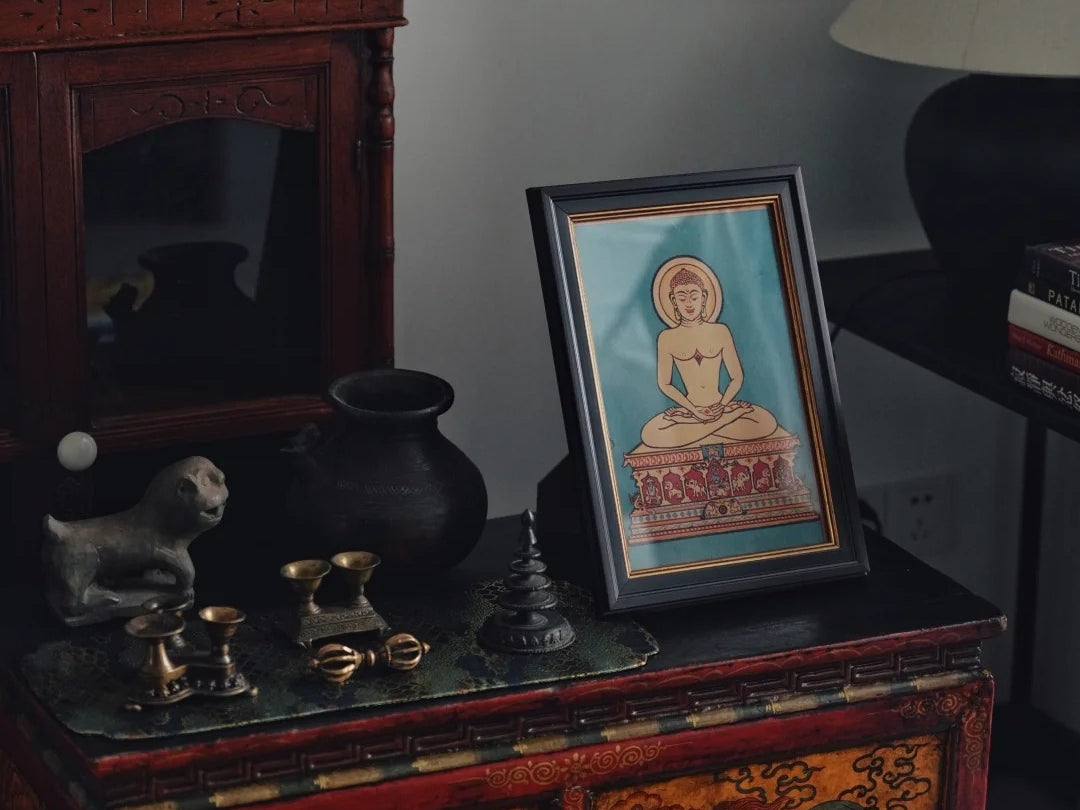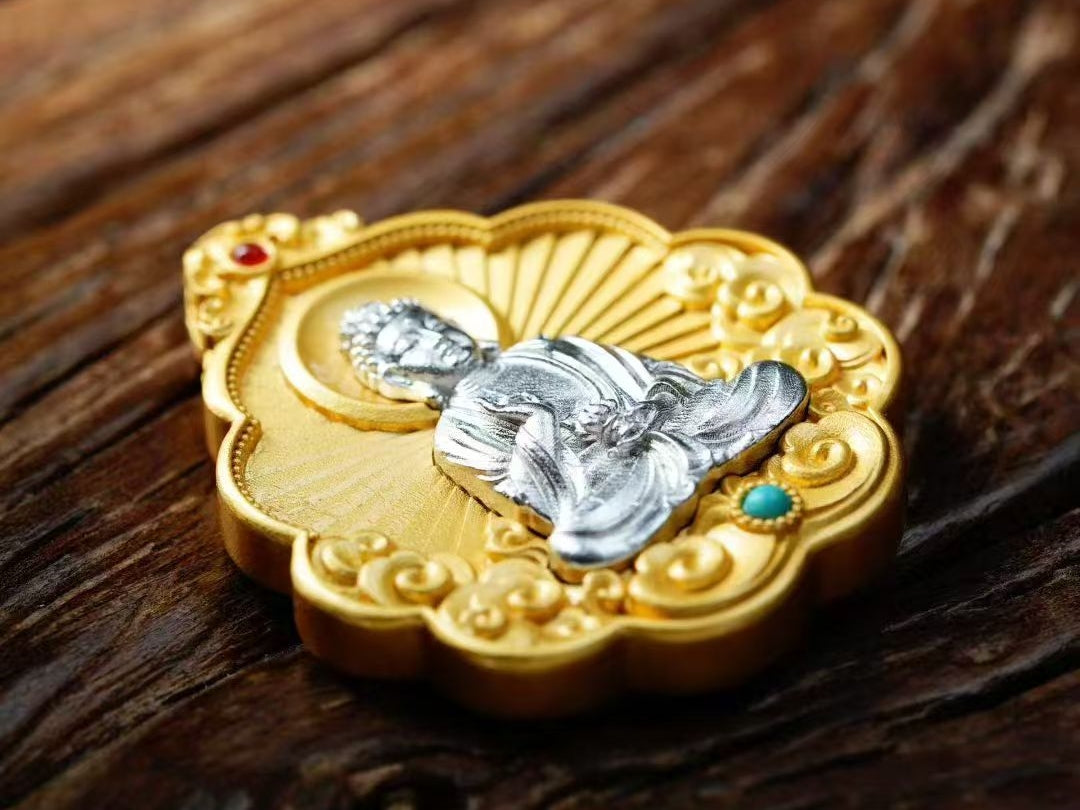Across Tibetan temples, home altars, and jewelry designs, one motif appears again and again—the Ashtamangala, or Eight Auspicious Symbols. Known in Tibetan as Tashi Tagye, these symbols are more than decoration. They express profound teachings on harmony, wisdom, and the blessings that flow from living a virtuous life.

A Legacy of Symbolism and Craft
In Tibetan culture, the Ashtamangala is not a single emblem but a set of eight sacred forms, each representing a different aspect of well-being and enlightenment. They appear in thangka paintings, silver pendants, monastery murals, and even woven into carpets and ceremonial textiles. Together, they remind the viewer of the Buddha’s teachings and the path toward liberation.
These symbols are often arranged in a vase-like composition called Tashi Tagye Bumpa, meaning “vase of auspiciousness.” This design form reflects abundance and completeness—a visual blessing offered to all who see it.

The Eight Auspicious Symbols and Their Meanings
1. The Precious Parasol (Chhatra)
Symbol of protection and royal dignity, the parasol shields beings from suffering, illness, and harmful influences. Traditionally carried above kings and spiritual masters, it represents both worldly honor and the enlightened mind’s power to dispel obstacles.
2. The Golden Fish (Matsya)
A symbol of freedom and spiritual liberation. Swimming through water effortlessly, the fish embody clarity and awareness—reminding us to navigate life’s challenges with wisdom and flow. In Tibetan belief, golden fish also represent prosperity and abundance.
3. The Treasure Vase (Kalasha)
A vessel of infinite blessings, often filled with jewels, water, or medicinal herbs. It symbolizes long life, wealth, and inexhaustible wisdom. Many Tibetan temples still keep treasure vases as offerings, representing the unending generosity of the Buddha’s teachings.
4. The Lotus (Padma)
Perhaps the most recognized of the Ashtamangala, the lotus rises pure and beautiful from muddy water. It stands for spiritual awakening, purity of heart, and the potential for enlightenment within every being. A common motif in Tibetan jewelry, the lotus encourages us to remain untainted by the difficulties of the world.
5. The White Conch Shell (Shankha)
Its sound carries far and wide, symbolizing the voice of Dharma spreading throughout the universe. In Tibet, the right-spiraling conch shell is especially honored. Its call is believed to awaken beings from ignorance and announce the arrival of truth and compassion.
6. The Endless Knot (Shrivatsa)
A pattern without beginning or end, representing the interconnection of all things—love, wisdom, and time itself. It also expresses the union of compassion and insight, the two wings of enlightenment. The endless knot often appears in Tibetan silver amulets as a charm for enduring relationships and good fortune.
7. The Victory Banner (Dhvaja)
An emblem of triumph—not over others, but over ignorance and suffering. Historically, it was a battle standard carried by ancient leaders; in the spiritual sense, it represents conquering negative forces and achieving peace through knowledge and discipline.
8. The Golden Wheel (Dharmachakra)
The wheel of Dharma turns eternally, signifying the Buddha’s teachings that guide beings toward awakening. Its eight spokes correspond to the Noble Eightfold Path, a reminder to live with right view, right action, and right intention.

The Ashtamangala in Art and Daily Life
From the Qing dynasty onward, Tibetan artisans began creating three-dimensional representations of the Eight Auspicious Symbols—often in bronze, silver, or gilt copper. These were placed alongside offering bowls on temple altars or used as decorative motifs in monastery architecture.
Today, you’ll find the Ashtamangala painted on monastery walls, embroidered on prayer flags, engraved on pendant necklaces, or etched into ceramic incense holders. During festivals or weddings, Tibetans even draw the eight symbols in white powder on the ground to invite prosperity and joy.
Each image functions as both ornament and reminder: beauty becomes a vehicle for mindfulness.
Beyond Ornament: A Living Tradition
To wear or display the Ashtamangala is to participate in a living lineage of devotion and artistry. Whether engraved on a Tibetan silver pendant or woven into home textiles, these motifs connect the modern world to a timeless vision of balance and benevolence.
Rather than superstition, they reflect an elegant philosophy—that the sacred and the beautiful can coexist in daily life.
When we carry or contemplate these eight symbols, we’re not only invoking blessings—we’re remembering the deeper truth they point to: that peace, clarity, and compassion already dwell within us.




